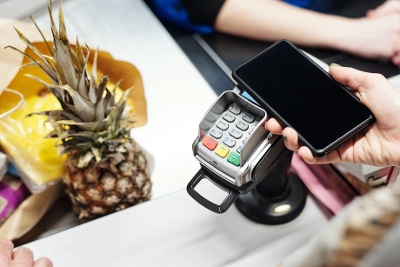Why apply the customer journey in the Retail industry?
Have you ever shopped at a supermarket, gone to a store looking for pants, or had lunch at a fast-food restaurant? Surely everyone, and if your...
By 2022, according to Insider Intelligence in its global e-commerce forecast, "retail sales will grow 5% year-on-year to more than $27.33 trillion." This accelerated growth means change.
The main objective of retail is to sell to the end consumer, which means being clear about the buyer personas, adapting quickly to changes in habits, and directing all strategies toward the customer.
This industry has had to evolve hand in hand with consumer expectations and demands, but do you know what they are?
Index
Retail sector
This sector comprises businesses selling directly to end customers at retail. That is, a retailer acquires products in high volumes and then sells them in small quantities to the consumer, being one of the last links in the chain; the manufacturer produces the goods, a wholesaler buys them for resale, and the retailer purchases them to market them to the end buyer.
To understand the concept more broadly, let us mention a few examples:
In general, restaurants, department stores, outlets, supermarkets, online stores, and any business that sells to the end consumer are retail.

The main change in the industry [technology].
Now, being clear on the concept and who retailers are, let's talk about the most recent changes the industry has undergone.
The pandemic brought a series of alterations, shaking the retail market. In many countries, physical stores had to remain closed for an extended period, forcing people to look for other options. Companies that had refused to digitalize their processes, invest in technology, and offer multichannel retailing had to adapt quickly to survive the abrupt change.
>> Adapting to disruption: defining processes before automating <<
Looking at it from the customer's perspective, many people moved to telecommute, no one could leave home, or there were time restrictions, and, in general, no one wanted to expose themselves. This altered buying habits because businesses began offering options to solve those pains.
Even before the pandemic, there was already talk of digital transformation, but this event accelerated the emergence of digital efforts, even causing companies to eliminate physical channels.
"Even before the COVID-19 pandemic, consumers had begun to embrace the selection and convenience of e-commerce. In 2019, e-commerce accounted for approximately 25% of total retail sales" (McKinsey & Company, 2021).
Many companies' abrupt transition without a plan or strategy was the problem. They found themselves with a technology tool but needed defined processes to guide the business. Businesses rushed to implement eCommerce or open accounts on all social networks without being clear about who the buyer persona was, what their customer journey was, what processes affected their experience, how to communicate the value proposition, or whether the business model should change.

>> Customer Journey in the retail industry <<
>> Buyer Persona in the retail industry <<
Trends and challenges
With new consumer habits and patterns, retail businesses need a digital presence to maximize sales, but that comes with maintaining consistency across all channels, processes, and people.
In addition, post-pandemic, with nearly two years of restrictions, consumers are returning to physical shopping.
These statistics reflect the importance of proper channels based on the buyer persona. It's not just about physical or digital channels but about being in the right places to respond to our customers' needs.
Other statistics of interest for the retail sector, given by Shopify, say that:

>> Automation in the retail industry <<
Recommendations
There are four main factors to take into account in the retail sector:
>> 6 steps that bring your company closer to digital transformation <<
The key for the retail sector is to know the customer, understand their buying process and touch points, define the proper channels and standardize efficient processes. In addition, having marketing, sales, and customer service strategies customized for each buyer persona and focused on the experience.
If you are interested in this topic and need support, Imagineer can help you.

Have you ever shopped at a supermarket, gone to a store looking for pants, or had lunch at a fast-food restaurant? Surely everyone, and if your...

As part of a team in the organization, we have to face different challenges our customers present to us: how can we help them with their pain? How...

When retailers focus on customer service, they often consider how they can improve all points of contact and service to drive more sales, because...